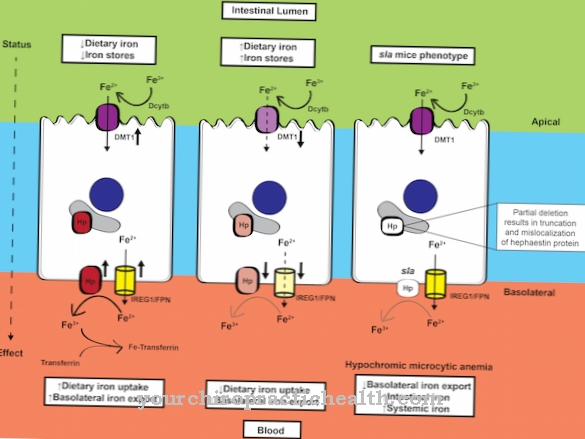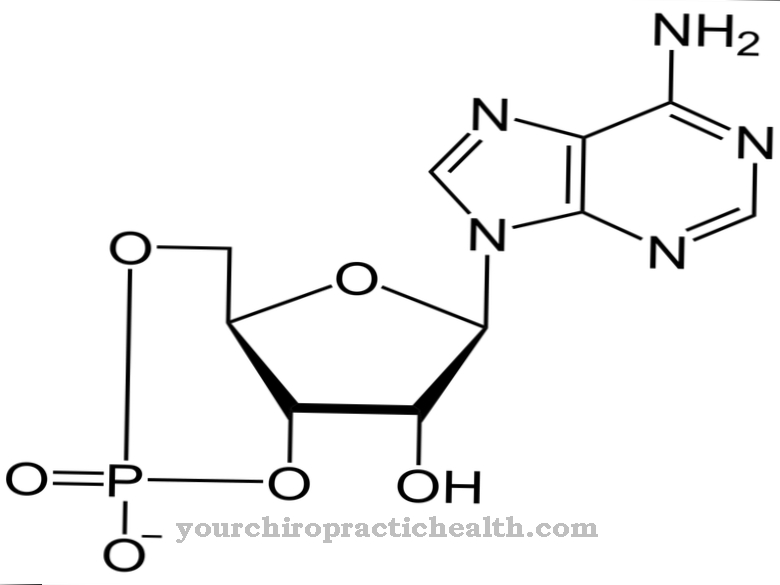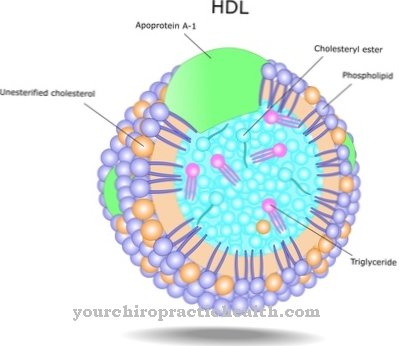Gastrin is a hormone made in the gastrointestinal tract. The main place of action of the hormone is the stomach. But it also has an effect on the pancreas.
What is gastrin?
Gastrin is a peptide hormone. It is also called polypeptide 101. Peptide hormones are fat-insoluble hormones that are made up of proteins. On the basis of the length of the peptide chains, three different forms of gastrin can be distinguished: big gastrin, gastrin I or II and mini gastrin.
Big gastrin is 36 amino acids in length. Gastrin I and II consist of 17 amino acids and mini-gastrin or little gastrin has a length of 13 amino acids. Chemically speaking, gastrin is related to the hormone cholecystokinin. Gastrin is mainly produced in the stomach and small intestine. There are special tumors that can produce gastrin in large quantities. This is why these tumors are also known as gastrinomas.
Function, effect & tasks
Gastrin is synthesized in the so-called G cells of the gastrointestinal tract. The G cells are specialized cells that are endocrinically active. They are found predominantly in the gastric mucosa and here especially in the gastric glands of the pyloric vestibule (antrum).
But there are also G cells in the first section of the small intestine. The secretion of the hormone is controlled by neuroendocrine cells in the stomach. They release gastrin-releasing peptides (GRP). These in turn stimulate the release of gastrin from the G cells. The parasympathetic nervous system also influences the G cells. The postganglionic fibers of the tenth cranial nerve (vagus nerve) play an important role here. If the chyme is very protein-rich, gastrin is also increased. The trigger here is the increased concentration of amino acids in gastric secretions. The expansion of the stomach through food as well as alcohol and caffeine consumption also stimulate gastrin production and release.
The secretion is inhibited by a pH value in the stomach below three. There are also various hormones that can inhibit gastrin production. These include somatostatin, secretin, neurotensin and the gastrin inhibiting peptide (GIP).
Education, occurrence, properties & optimal values
The hormone gastrin reaches the target organs via the bloodstream. In the stomach, it binds to the gastrin receptors of the parietal cells. The parietal cells are located in the lining of the stomach. They secrete hydrochloric acid and the intrinsic factor. The intrinsic factor plays a crucial role in the absorption of vitamin B12 in the intestine.
As soon as the gastrin binds to the specific receptors, the phospholipase C is activated. This increases the calcium concentration within the parietal cells. This increase stimulates the parietal cells to secrete gastric acid. The pH inside the stomach drops. But not only the parietal cells are stimulated by the hormone. The main cells of the stomach also respond to gastrin. The main cells, like the parietal cells, are located in the gastric mucosa. Under the influence of gastrin, they produce pepsinogen. Pepsinogen is the inactive precursor of pepsin. Pepsin is a digestive enzyme that is mainly responsible for breaking down proteins.
Only under the action of the hydrochloric acid released by the parietal cells is pepsinogen activated and effective as pepsin. Gastrin also has an impact on histamine production. Histamine is a tissue hormone with many functions. Here, however, it is mainly used to stimulate hydrochloric acid production. Gastrin also stimulates the smooth muscles of the stomach. The gastric peristalsis ensures that the food is thoroughly mixed. This also emulsifies the fats in the food so that they can later be digested better in the intestine.
Outside the stomach, gastrin acts on the pancreas (pancreas). There it stimulates the secretion of insulin, glucagon and somatostatin.
Diseases & Disorders
A clinical picture in which gastrin plays a decisive role is Zollinger-Ellison syndrome. Zollinger-Ellison syndrome is a paraneoplastic disease. Paraneoplastic syndromes are associated with malignant cancers.
Tumors that can cause Zollinger-Ellison syndrome are mostly found in the pancreas or in the small intestine. Because these tumors produce gastrin, they are also called gastrinomas. In gastrinoma, gastrin is produced regardless of food intake. This leads to an increased formation and release of hydrochloric acid. This irritates the lining of the stomach and small intestine, which can lead to ulcers.
The patients suffer from severe abdominal pain and heartburn. If the irritation is severe, vomiting may be bloody. In about half of the cases, people have diarrhea. Hydrochloric acid deactivates fat-splitting enzymes. This can occasionally lead to fatty stools. Metabolic alkalosis and hyperparathyroidism are observed in isolated cases. The condition is extremely rare but can occur at any age.
Not only overproduction, but also a lack of gastrin can cause discomfort. A gastrin deficiency can result in hypoacidity of the stomach. The symptoms of an acid deficiency are similar to those of hyperacidity. Those affected suffer from gas, belching, and heartburn. There is a lack of nutrients and, in particular, a lack of vitamin B12. Hair loss, splintering nails, skin diseases, anemia and osteoporosis can also be taken as indicators of a gastrin deficiency. Gastrin can also be used diagnostically here. Type A gastritis is accompanied by a lack of stomach acid. Here the gastrin level in the blood serum is determined.
If there is hypergastrinaemia, this suggests decreased acid production. The following applies: the lower the pH value in the stomach, the higher the gastrin level in the blood. The exception here is of course Zollinger-Ellison syndrome, where the gastrin level is too high, regardless of the pH value in the stomach.





.jpg)






.jpg)



.jpg)










.jpg)
